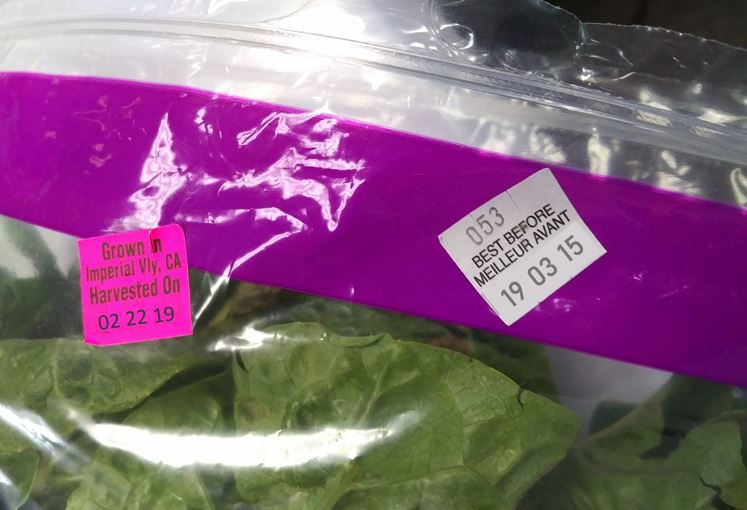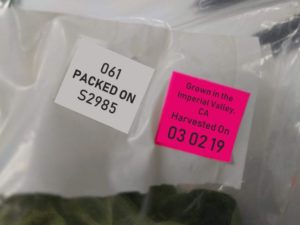Confusion about food labels and food waste continues among consumers. A recent article in Time Magazine Confused By Expiration Dates? You’re Not Alone. Here’s What They Really Mean again highlights the challenges consumers face in trying to make sense of when to eat – and when to toss – food.
The Time article cites a study published in Waste Management and states: Many Americans wrongly believed that food product dates—often prefaced by “best by” or “sell by”—are federally regulated and indicate the point after which the food is no longer safe to eat. (Neither is true: labeling decisions are made voluntarily by food companies and are meant to help consumers determine how fresh a food is, according to the USDA.) As a result, 84% of people throw out food when it’s close to the package date at least occasionally.
The variety of food labels is part of the problem as consumers don’t understand the various meanings.
The article continues by explaining what the various food labels are supposed to mean: “Best by” refers to when a food is at peak flavor or quality, says Janell Goodwin, a technical information specialist with the USDA. “Sell by” indicates how long a store should sell or display a product for inventory management reasons. And the “use by” date is the last recommended day that a product can be eaten at peak quality, Goodwin says. “These are all dates of quality and freshness, not of safety,” she says.
(If you’re interested in learning how the dates are arrived at, check out our earlier blog about date labels which provides explanations.)
So, all of this food label jargon makes sense, right? Apparently not to everyone. The study revealed: 42% of people thought “use by” referred to safety, and 19% thought the same of “sell by.”
Is it realistic to expect consumers to understand all of these food labels? I don’t think so. And, when there’s so much confusion, there’s very little value.
As noted in the Time article: the Grocery Manufacturers Association (GMA) and the Food Marketing Institute, are pushing to narrow the list of food date labels to only two options: “best if used by,” which would relate to freshness and quality, and “use by,” which would refer to the last safe day to eat highly perishable foods.
But it’s not just the types of food labels, it’s also the types of food that make labeling challenging and contributes to the massive food waste problem. It’s one thing when a shelf-stable can of soup or bag of pasta says that it is “best by” and you know you have a few days or months to consume it. But what about fresh foods?
Food Labels and Perishables: Even More Confusing
Many produce and perishable items have food labels for a “harvested on” date. Some also have a “packed on” date. Some items also tell you where they were harvested. This provides consumers with more sources for confusion. For example, note in the photo above, the romaine hearts in the bag were “harvested on” February 22 and “best before” March 15.
On another package of romaine shown below, we have the “harvested on” data and also a “packed on” date – I have no idea what date “S2985” is.
Beyond that, would or should a typical consumer know how many days of freshness a particular item of produce should have? Those of us in the industry might know it should be around 10 days of shelf-life for romaine hearts, if handled properly from harvest. But for strawberries its about five days. Raspberries maybe two or three days. So, for the label just above, if the romaine was harvested on March 2, how many days do I have before it will spoil?
There’s no way of knowing.
Why? Because shelf-life varies by pallet beginning in the field, based on harvest conditions, the produce variety and processing and handling from harvest to the store.
So, even if a consumer knows that they should have ten days of shelf-life for romaine the date isn’t likely accurate because the shelf-life of any given pallet of romaine may vary by days.
Is Understanding Food Labels Really the Consumer’s Responsibility?
But, realistically, the consumer shouldn’t have to concern themselves with the complexity of food labels on fresh produce. They should trust that their retailer is managing the freshness for them and ensuring that each clam shell of strawberries or bag of romaine hearts has sufficient freshness to last for the consumer to enjoy the produce at home – without spoiling.
How About a “Fresh Until” Food Label?
A good way to solve the food label problem is to dynamically calculate the remaining shelf-life of each pallet of produce based on the conditions mentioned above: produce variety, harvest conditions and processing and handling.
Once we know the total potential shelf-life – by empirical studies and modeling – we can then utilize IoT sensors, machine learning and predictive analytics to dynamically calculate the actual remaining shelf-life of each pallet of produce and provide that information to the retailer – and even potentially to the consumer.
Zest Fresh enables grocers to know the dynamic remaining shelf-life of the produce they display.
In that way, the consumer doesn’t need to concern themselves about a label because the produce is always fresh– and, the retailer could potentially apply a food label that is “Fresh through March 17, 2019”…or, if they want to be even bolder and differentiate themselves from their competitors, a label that is “Guaranteed Fresh through March 17.”
It’s a win for the grocer, the consumer and the environment because, in the end, truly accurate food labels reduce waste and improve customer satisfaction and retailer loyalty..



